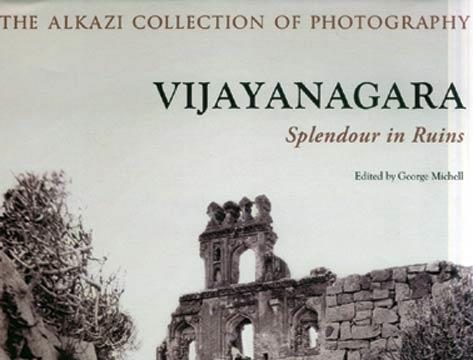Vijayanagara was a tremendous and tragic moment in South Indian history,” says Anila Verghese in Vijayanagara: Splendour in Ruins (Mapin, Rs 2,850). This succession of sepia-tinged photographs from the Alkazi collection, with their beautiful depictions of crumbling and creeper-covered monuments more than substantiates this observation. This is not simply a lavishly illustrated coffee-table book but also a history of 19th-century photography in India and an attempt to contextualise it, technologically and ideologically.
In the 15th and early 16th centuries, Vijayanagara was one of the largest and richest cities in Asia, a sprawling complex of temples, palaces, tanks and pavilions, with a ring of fortifications that demarcated the separate spaces of the Urban Core, the Sacred Complex and the Royal Complex, each with its own set of temples and tanks. Not surprisingly, the great travellers of their day — the Persians, Arabs, Italians and Portuguese — flocked there and left a record of the city’s marvels.
In the 19th century, when these photographs were taken, the city was in ruins. Photography was then a fledgling science and the photographers were still inventing their own solutions to working in Indian conditions. This genre of sepia-toned photos of crumbling ruins — usually with a ‘native’ crouched in the foreground to give a sense of scale — is not unfamiliar (think Beato, for instance) — and is an instant trigger for reflexes of nostalgia and romanticism. What raises this book above its coffee-table counterparts, however, is the scholarly commentary on the photographs — their composition and technical background, and the attempt to understand the aims and constraints of the photographers. The book’s editor, George Michell, agrees that this is an orientalist representation that highlights the “strange and marvellous”, but the genuinely beautiful images also document the thinking of their time and provide a record of the monuments.
What comes across most clearly is the peculiar and haunted desolation of abandoned cities, once great, ambitious and confident they would last forever, and today just heaps of stones. There’s a moral in that somewhere.




